Global Development: How air pollution, a dying river and swarms of defecating insects threaten the Taj Mahal
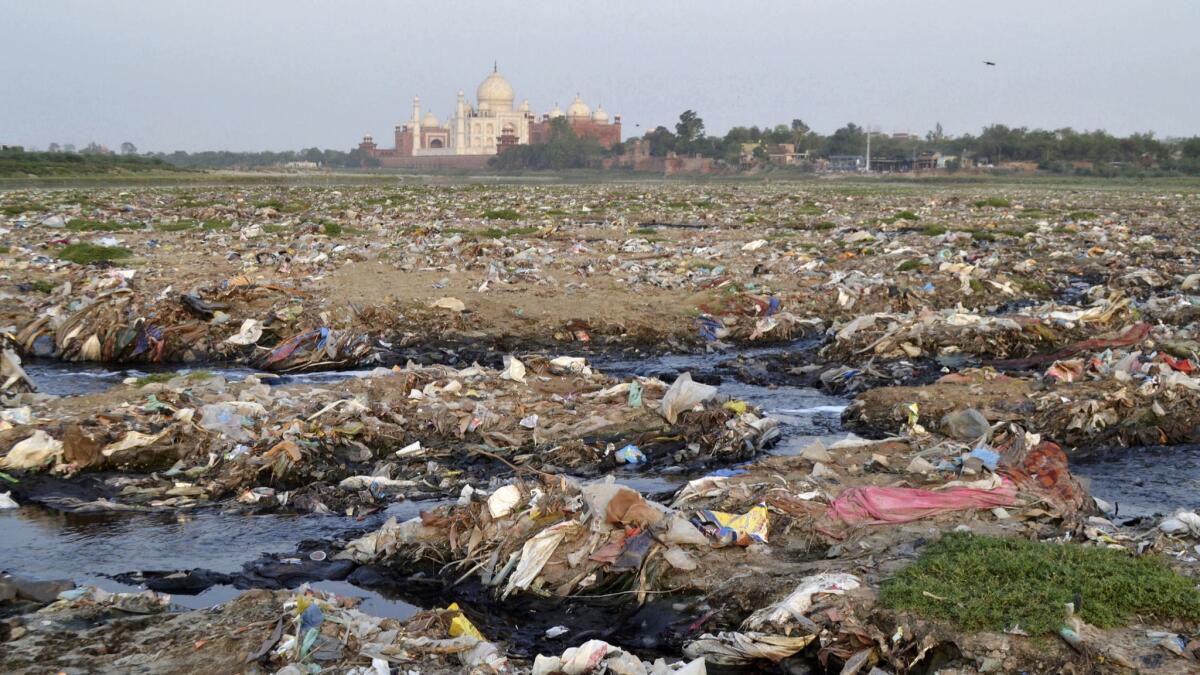
- Share via
Reporting from Agra, India — India’s most famous poet, Rabindranath Tagore, once wrote that the Taj Mahal stood on the banks of the Yamuna River “like a teardrop suspended on the cheek of time.”
One wonders whether the late Nobel laureate could have found a lyrical description of the latest threat facing the grand, white-marble monument: millions of defecating insects.
Excrement from mosquito-like bugs breeding in the heavily polluted river has stained parts of the 17th century mausoleum green, while the footsteps and palms of thousands of daily visitors have darkened the stone floors and intricately patterned walls of a structure long regarded as the pinnacle of Mughal architecture.
India’s Supreme Court this month blasted the archaeological agency that oversees the monument for failing to protect it and suggested that outside experts be brought in to take over restoration efforts. During a hearing, one justice barked at a government attorney: “Perhaps you do not care.”
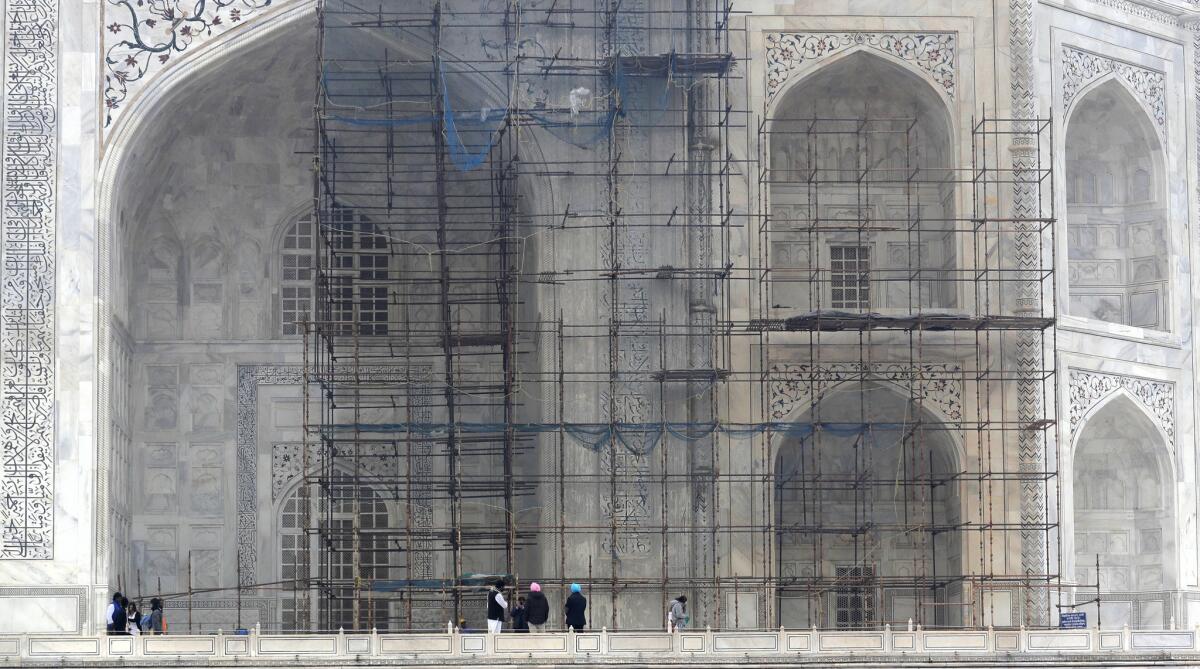
But insect slime is only one of the problems facing the monument, built by the emperor Shah Jahan to house the remains of his favorite wife after she died while giving birth to their 14th child in 1631. Today the Taj Mahal appears less a testament to eternal love than a symbol of India’s very earthly environmental troubles.
The once mighty Yamuna — after being dammed upstream to provide electricity for the region surrounding India’s capital, New Delhi — now runs low and thick with trash and untreated waste, and blooms with insect-attracting algae.
Auto emissions, deforestation and crop burning have contributed to heavy smog that experts say has dimmed the tomb’s pearly exterior to a jaundiced yellow. The number of cars registered in the city of Agra, where the Taj Mahal is situated about 110 miles south of New Delhi, has mushroomed from about 40,000 in 1985 to more than 1 million.
“The Taj Mahal has never looked as fatigued, pale and sick as it does now,” said Brij Khandelwal, a journalist and environmental activist in Agra.
Since the 1970s, Indian authorities have issued rule after rule aimed at protecting the country’s most popular and lucrative tourist attraction, which draws more than 7 million visitors a year, 90% of them domestic tourists. They have banished coal-powered factories from the area, banned gasoline-powered vehicles near the monument and distributed cooking fuel to reduce poor families’ reliance on dirtier heat sources such as wood and cow dung.
But many of the rules are flouted. And as the area surrounding New Delhi has become one of the fastest growing urban agglomerations in the world — projected to become the world’s most populous city within a decade — the environmental challenges have multiplied.
Standing on the west bank of the Yamuna about a mile upstream from the Taj Mahal, Khandelwal looked out over a nearly dry riverbed filled with plastic bottles, potato-chip wrappers, empty medicine packets and other detritus.
He walked over to a derelict sewage treatment plant whose windows were broken and watched a pipe deliver effluent directly into the riverbed, foaming with chemicals as it cascaded down.
“Most of the problems emanate from this dry riverbed,” Khandelwal said. “The original ambience of the Taj Mahal was based on the river — not just for aesthetic delight but also for its survival.”
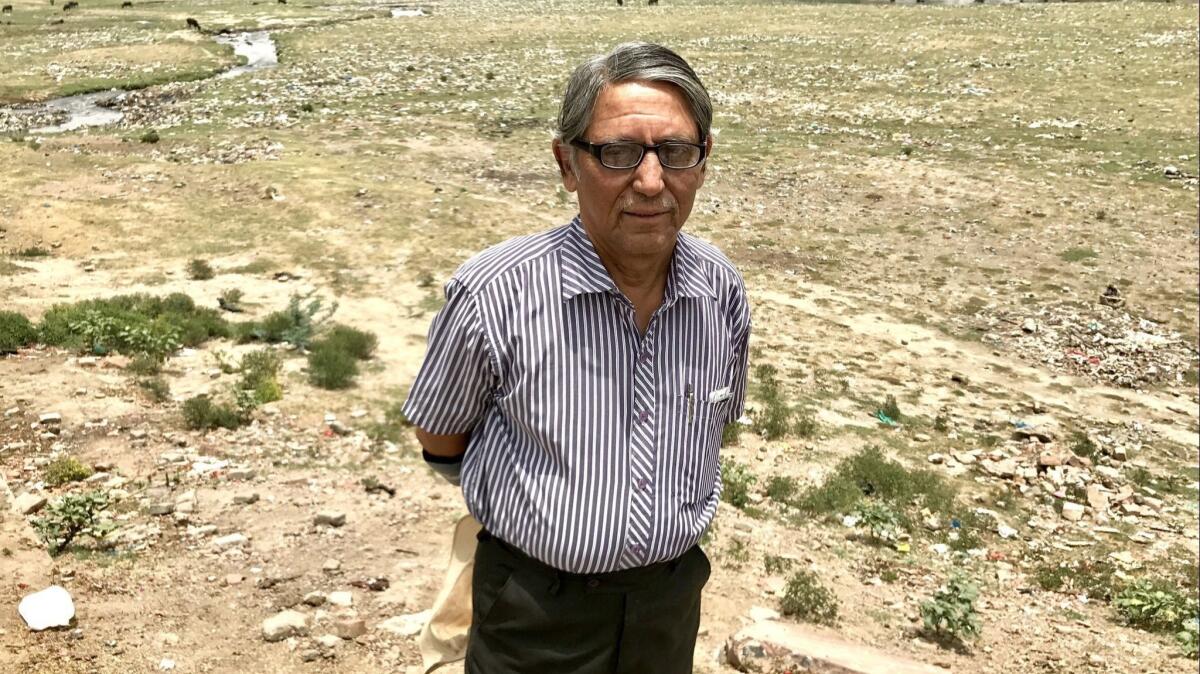
Like a beautician trying to smooth out wrinkles on an aging movie star, the Archaeological Survey of India, the agency that oversees the monument, has spent the last three years applying mudpacks to whiten the walls and minarets. But the grime simply returns.
“It’s terrible,” lamented Manoj Sharma, 45, who has led tours of the tomb for more than a decade.
Pointing to a section of the north wall overlooking the river, Sharma said that workers had recently applied the clay mixture known as fuller’s earth, traditionally used as a bleaching agent to absorb oil and grease from sheep’s wool.
But just weeks later, a dark goo, believed to be from the insects, again coated the petals of flowers carved into the marble.
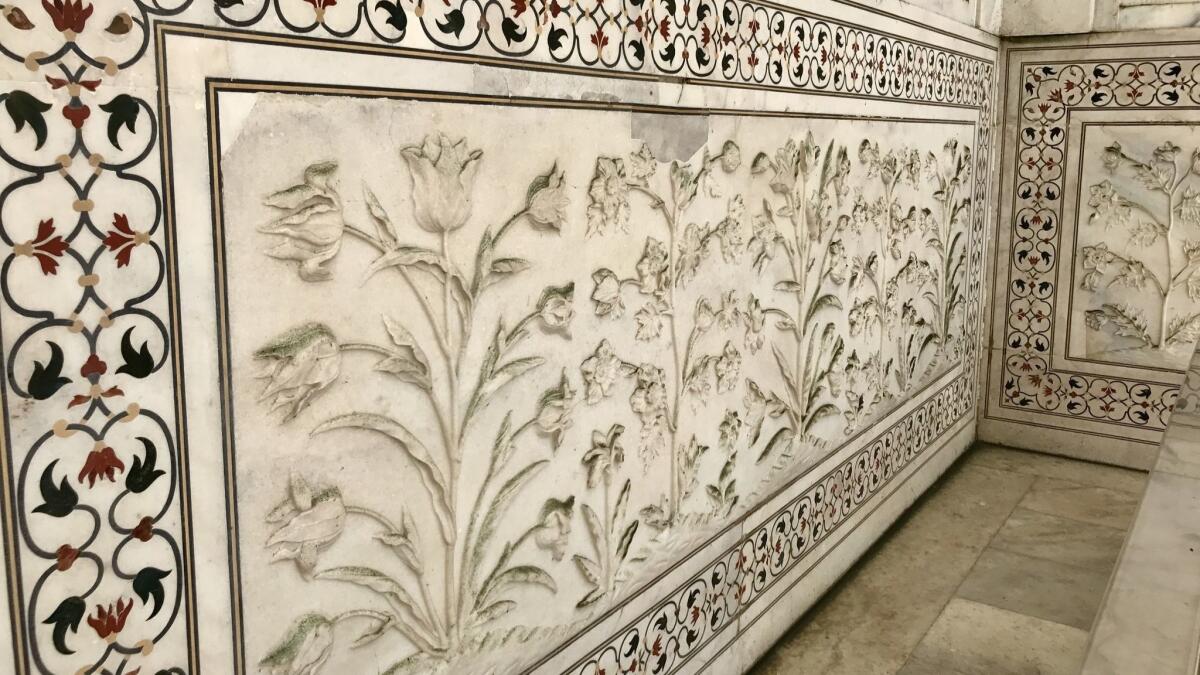
The Supreme Court expressed impatience with the prolonged cleanup effort, which has shrouded parts of the tomb in scaffolding for days and weeks at a time. With workers preparing to begin the mudpack treatment on the cloudlike dome of the mausoleum, its most recognizable feature, the Fodor’s travel guide suggested that visitors avoid the Taj Mahal for a year.
“Unless your dream Taj Mahal visit involves being photographed standing in front of a mud-caked and be-scaffolded dome, maybe give it until 2019 at the earliest,” the guidebook advised.
From a distance, the Taj Mahal still enchants: On a recent weekday, throngs of selfie-snapping visitors braved 105-degree heat to marvel at the stately crypt, flanked by soaring minarets and wide lawns.
But up close the monument shows signs of stress. Cracks in the marble have been patched with off-color cement that experts say expand and contract with the heat, further weakening the stone. The green lawns have grown patchy.
In March, pieces of red sandstone that were being held in place by a rusty clamp fell from the corner of one of the gates to the complex, although no one was injured. A few weeks later, two sandstone pillars decorating the gates were toppled in high winds.
“The Taj is getting weak, and it has been going on for some time,” said Mahatim Singh, a member of the Tourism Guild of Agra. “We require extra manpower and extra technology to overcome these problems.”
But the archaeological agency has been reluctant to cede control over the monument or invite international experts. Its director did not respond to questions from The Times, but one official, who requested anonymity because he wasn’t authorized to speak to the press, said the agency was being blamed for bigger environmental problems.
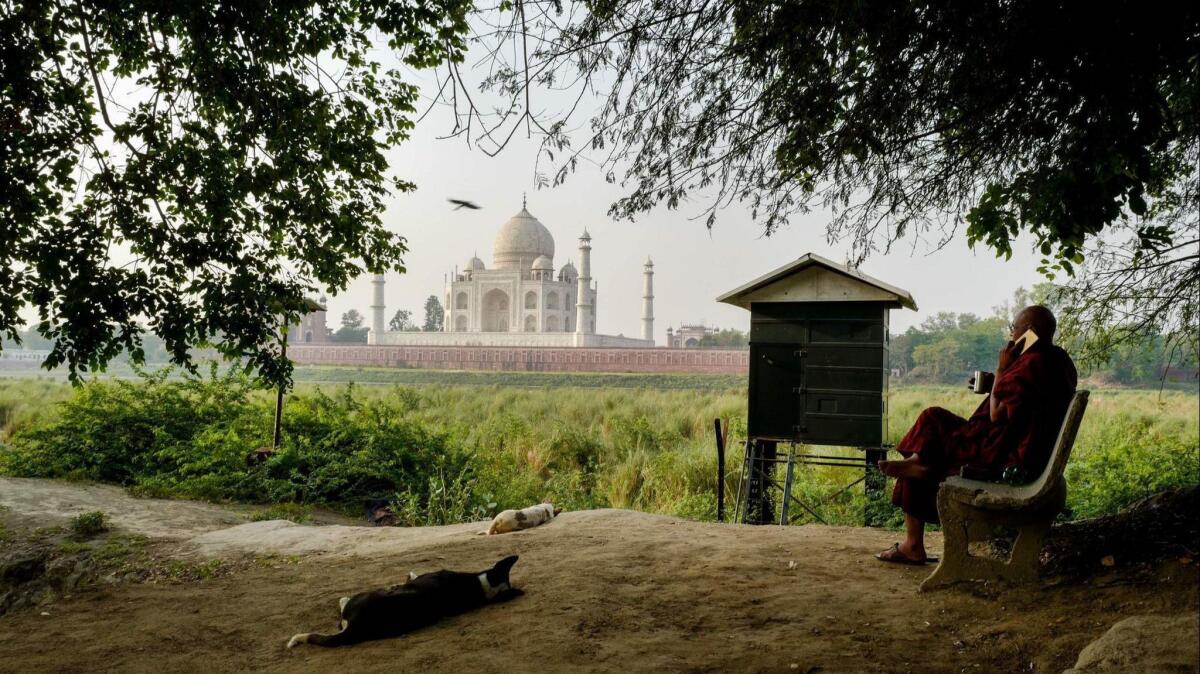
“Some of it they don’t have much control over,” said Divay Gupta, principal director for architecture at the nonprofit Indian National Trust for Art and Cultural Heritage. “But while what they have done has been effective to a certain degree, all of the methods have been sort of knee-jerk, and there is no preventive action.”
The agency plans this year to impose a three-hour limit on visitors touring the grounds in a bid to reduce crowds. But Gupta said the 42-acre complex could take in more visitors — and draw more revenue to pay for upkeep — if the site were better managed.
Khandelwal, the activist, said the monument was facing an emergency.
“The Taj Mahal represents our glorious past and our composite culture — it’s not just any tourist site,” he said. “It must be saved at any cost.”
Shashank Bengali is the South Asia correspondent for The Times. Follow him on Twitter at @SBengali
More to Read
Sign up for Essential California
The most important California stories and recommendations in your inbox every morning.
You may occasionally receive promotional content from the Los Angeles Times.











